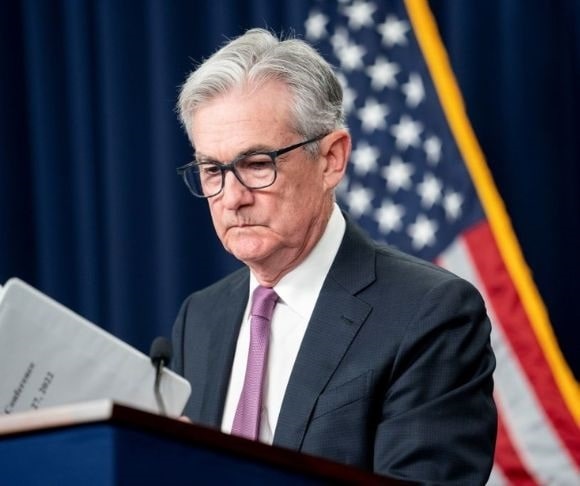Who’s afraid of Federal Reserve Chair Jerome Powell? Following his Jackson Hole Economic Symposium speech on Aug. 26, seemingly everyone is spooked by the man, the myth, and the legend of crisis-era monetary policymaking. The bulls were ultra-confident that the head of the world’s most powerful institution had their backs. As soon as the financial markets slipped into some trouble, the central banker would ease tightening efforts, inject some liquidity into the equities arena, and buy Treasury or corporate bonds. Instead, after the Eccles Building got inflation completely wrong, resulting in an abnormal post-pandemic economy, Powell and Co. entered panic mode. The bears are jubilant and feasting on stocks, while the bulls seek shelter and hide under red capes.
Jerome Powell Is Mad, Bro
During his annual speech in Wyoming, the Fed chair went scorched earth on the financial markets. Unlike the Duchess of the Cowboy State, Powell accepted the reality of the situation: “I am become Death, the Destroyer of worlds.” In other words, he will need to decimate the economy to cure rampant inflation through a higher fed funds rate. While this did not curry favor with Wall Street and Robinhooders belonging to the “Stonks Go Up” club, Powell was brutally honest. The result was a sharp selloff on the New York Stock Exchange that extended beyond the weekend.
Surely, strong employment data and decent economic figures would have stopped the hemorrhaging, right? Right? Well, the impeccable job numbers exacerbated investors’ agony, drowning in the swimming pool’s deep end filled with red ink. According to the Bureau of Labor Statistics (BLS), the number of job openings surged by 199,000 to 11.239 million in July, topping the market estimate of 10.45 million. This flirted with the record high of 11.855 million achieved in March. Job quits eased to 4.179 million, down from 4.253 million, BLS data confirmed.
Investors understood that the hotter the labor market is, the more likely the Fed will raise interest rates and keep them elevated for longer. Put simply, the Fed wishes to kill demand on every level to eviscerate the 8.5% consumer price index (CPI) and 6.3% personal consumption expenditure (PCE) price index – the Fed’s preferred inflation gauge.
Now, the reasons for another month of exceptional job growth might vary. It could be because employers are still desperate for unproductive laborers. It may be because workers need to pay for higher grocery prices. It might be irrational exuberance in a time of rational gloom. Whatever the reason, nothing could sway the Fed at this stage of the tightening cycle.
“We’re going to need to have restrictive policy for some time. This is not something we’re going to do for a very short period and then change course,” New York Fed Bank President John Williams told CNBC on Aug. 30. “I do think with demand far exceeding supply, we do need to get real interest rates above zero. We need to have somewhat restrictive policy to slow demand, and we’re not there yet.”
So, will the wolves of Wall Street pack up their briefcases, log off their Robinhood accounts and Bloomberg terminals, and enjoy the big sleep? Unfortunately, the forecasts are not exactly inspiring.
Feeling Tight

Jerome Powell (Photo by Liu Jie/Xinhua via Getty Images)
What a difference a week can make. Before the yearly Fed retreat, investors were widely anticipating a 50-basis-point hike at the September Federal Open Market Committee (FOMC) policy meeting. After Powell’s Jackson Hole oration, most of the market is expecting a three-quarter-point increase, according to the CME FedWatch Tool. In addition, rate-hike expectations ballooned to 3.75% by December, higher than the central bank’s dot-plot projection of a neutral rate of 3.4%. Since money is becoming a lot more expensive – effectively hurting margin-trading adrenaline junkies and the leveraged kings on The Street – it will be challenging to pump up already overpriced stocks.
As Liberty Nation recently noted, the real interest rate is still in subzero territory. Therefore, one can only imagine the blood flowing through the streets of New York if the institution brought the fed funds rate to a far more normal level. It would likely be comparable to the COVID-induced selloff in February and March 2020 when the Fed installed a Nitrous Oxide System (NOS) to the basement printing presses and re-enacted scenes from the dreadful Fast and the Furious franchise. Still, even if the US economy experiences a full-blown meltdown, the Fed will not intervene. Everyone will be left to fend for themselves.




